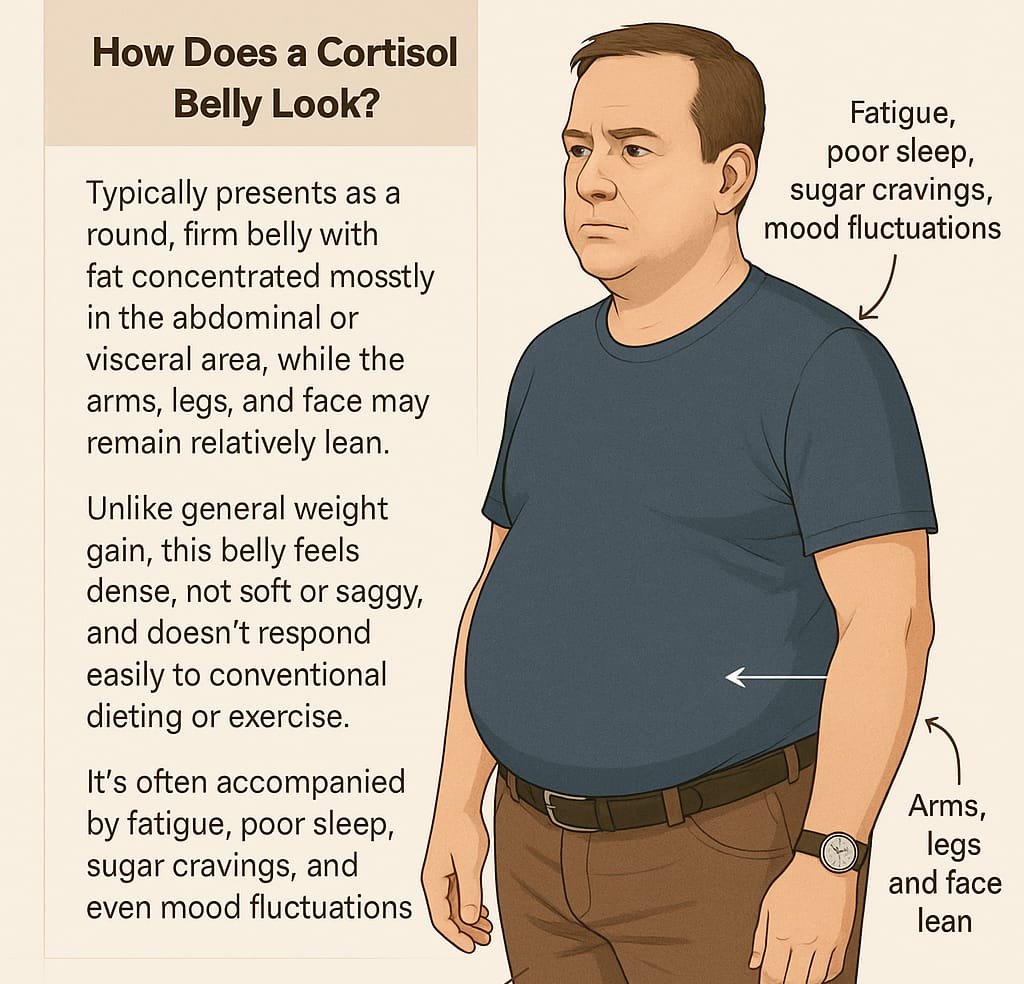Blogs

The Hidden Belly Fat You Didn’t Know About: Is Work Stress Giving You a “Cortisol Belly”?
If you’re working long hours, juggling deadlines, sitting through endless meetings, and suddenly noticing a belly that just won’t go away, despite your best efforts, this might surprise you.
It’s not always about overeating or lack of exercise.
It could be something called a “Cortisol Belly.”
What is a Cortisol Belly?
We all know belly fat happens. But a Cortisol Belly is different.
It’s a special kind of stubborn belly fat caused by chronic stress.
When you’re stressed—mentally or physically—your body releases a hormone called cortisol. It helps you handle short-term stress. But when stress becomes a daily thing, cortisol stays high for too long. This tricks your body into storing fat, especially around your abdomen.
The result?
A round, firm belly that refuses to shrink.
How Does a Cortisol Belly Look?
- A dense, firm belly, mostly in the central abdomen.
- Arms, legs, and face may still look slim.
- The fat feels “solid” rather than soft or saggy.
- It doesn’t respond well to crash diets or gym workouts.
Why is This Happening to Working Professionals?
Think about your daily routine:
- Constant work pressure, deadlines, and multitasking.
- Long hours of sitting at desks or in traffic.
- Skipping meals or relying on fast food and sugary snacks.
- Late nights for work, binge-watching, or catching up on emails.
- Little or no time for exercise, hobbies, or relaxation.
All of these factors raise cortisol levels and disturb your metabolism.
Why Should You Be Concerned?
A Cortisol Belly is not just a cosmetic concern.
It increases your risk of:
- Diabetes
- High blood pressure
- Heart disease
- Fatty liver
- Mental fatigue and burnout
In simple words, it silently affects both your health and performance at work.
Can You Reverse a Cortisol Belly?
Yes, with simple but consistent lifestyle changes:
- Get Checked: A basic health check-up can measure your cortisol, insulin, and sugar levels.
- Manage Stress Daily: Try 5-minute breathing exercises, short mindful breaks, or walks during work.
- Fix Your Meals: Avoid skipping meals. Carry healthy snacks like fruits, nuts, or yogurt.
- Move More: Take walking calls, stretch during breaks, use stairs.
- Prioritize Sleep: Aim for at least 6-7 hours of restful sleep.
- Take Professional Help: Doctors can guide you with the right tests, advice, and a sustainable health plan.
Remember:
Small Actions Today = Big Health Wins Tomorrow
At Aarti Clinic®, we meet many professionals in their late 20s and 30s dealing with Cortisol Belly and its related health problems. The good news? With awareness and small, steady changes, it’s absolutely possible to turn things around.
Taking care of your health doesn’t mean giving up on your career.
In fact, being healthier will make you more productive, focused, and energetic.
So the next time you notice that stubborn belly fat, ask yourself: Is it time to check your cortisol?
Dr. Anand Hinduja
Dr. Anand Hinduja is a highly skilled and experienced family consultant with a special focus on diabetes and thyroid disorders
